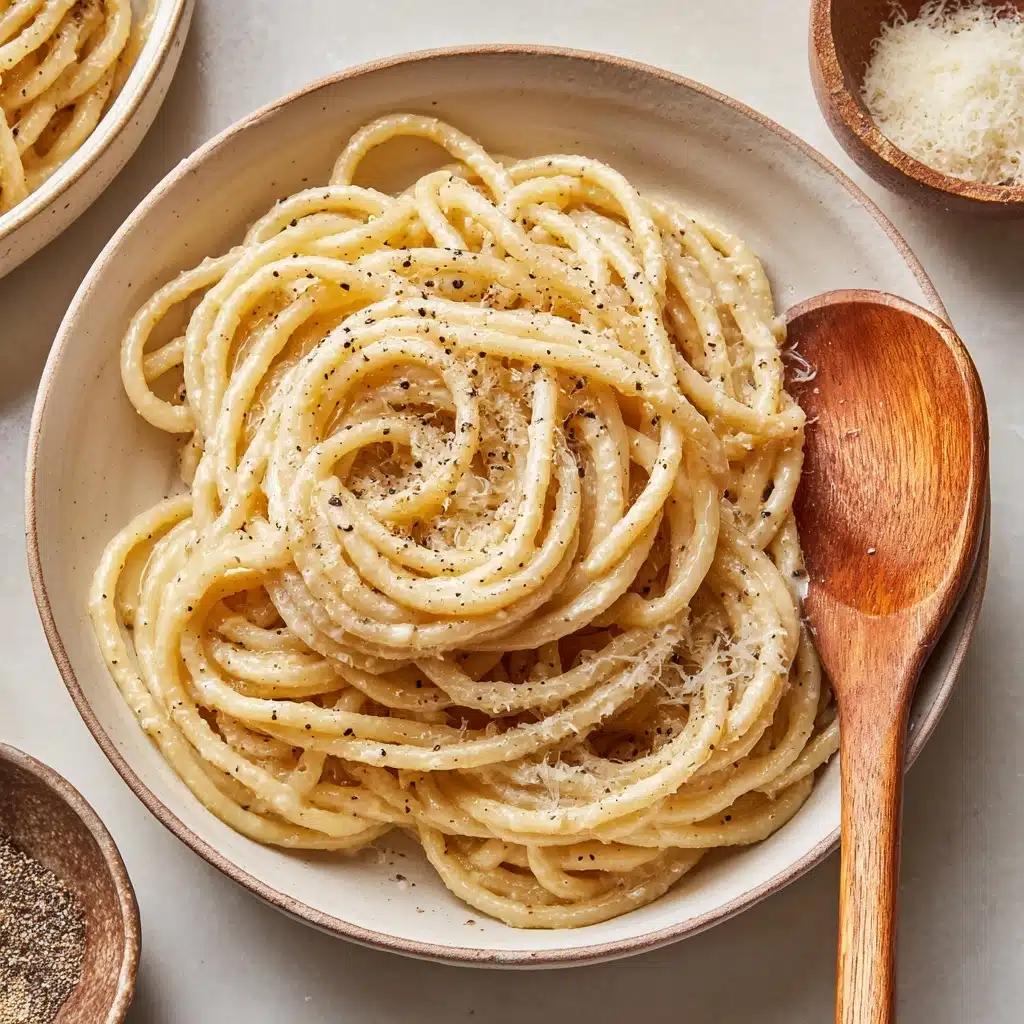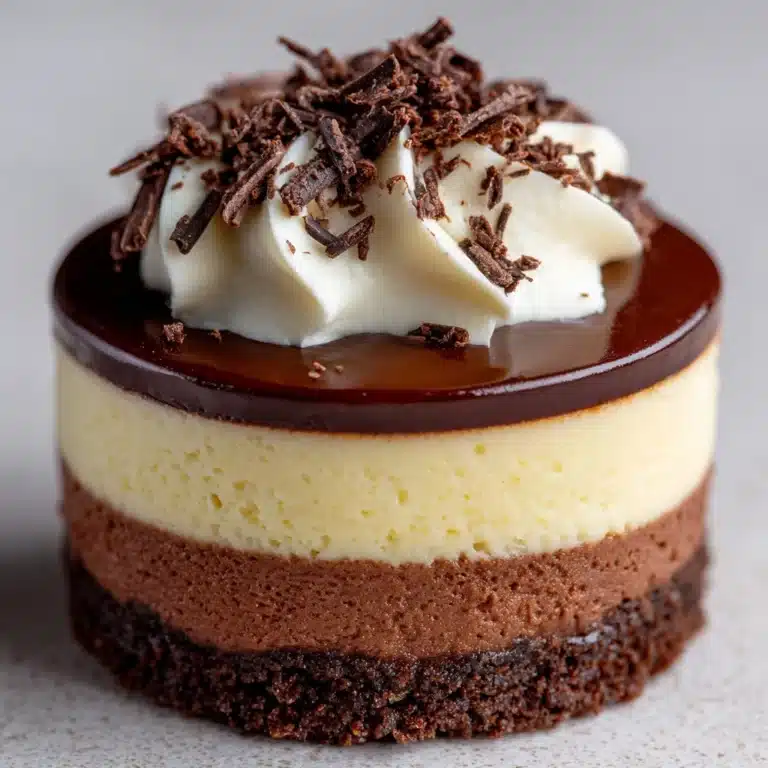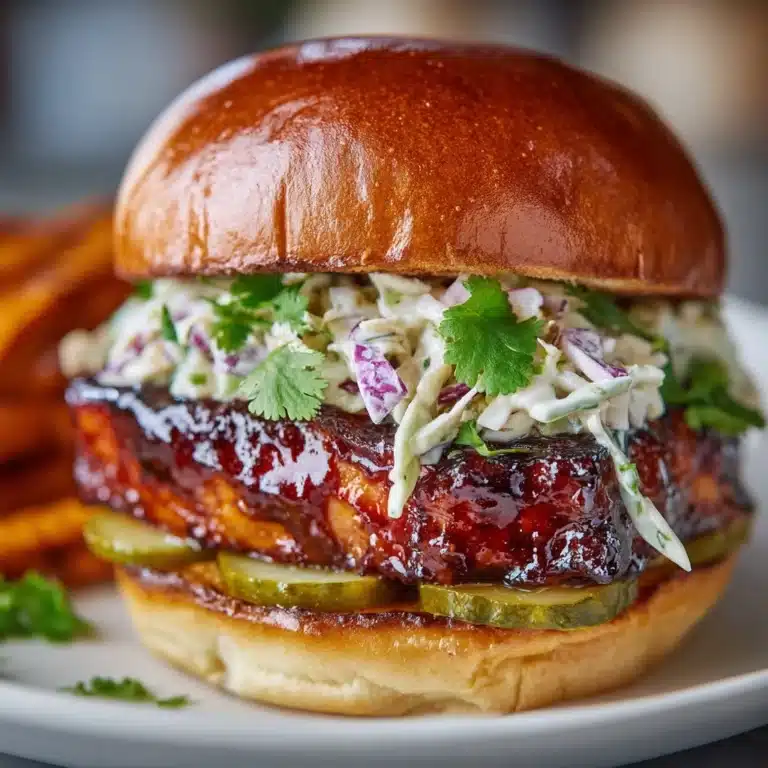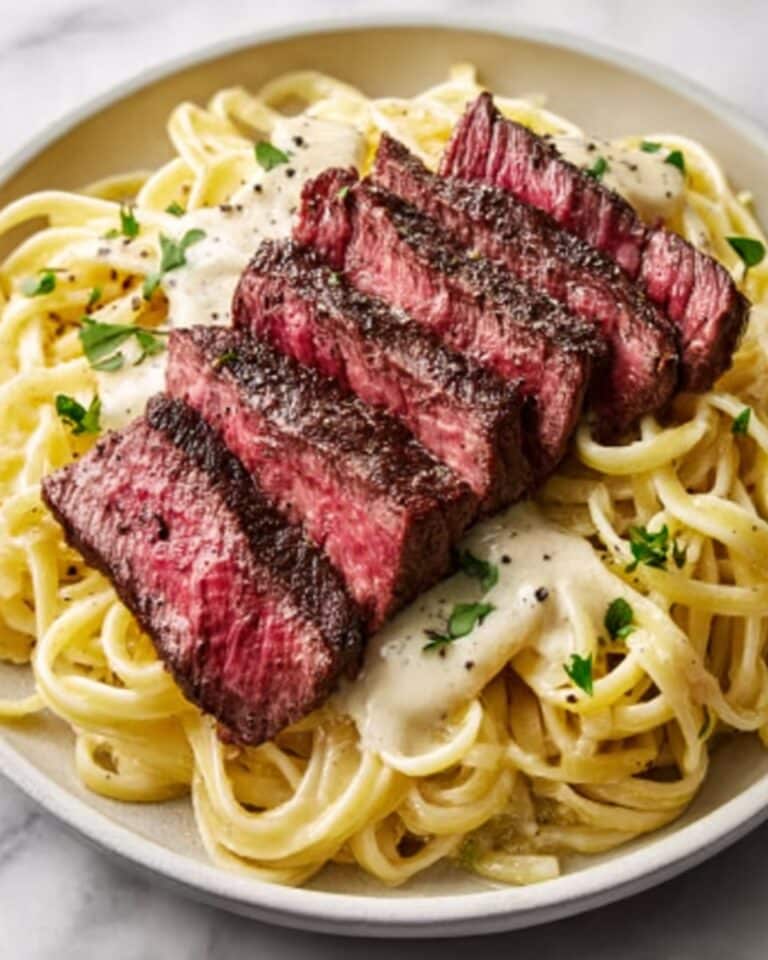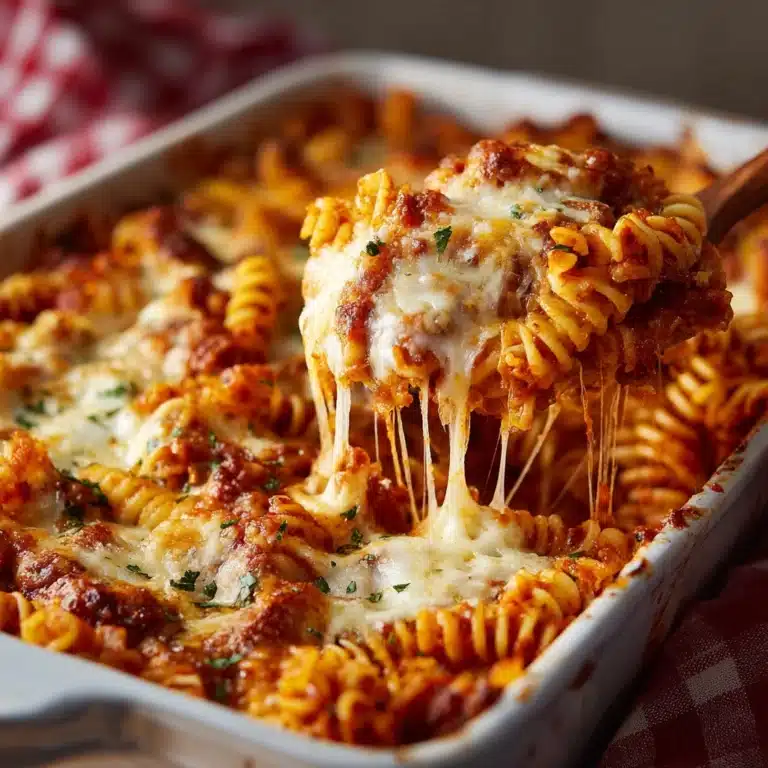If there’s ever been a pasta dish to sweep you off your feet with its simplicity and sheer flavor power, it’s Cacio e Pepe. This classic Roman dish transforms just a handful of pantry staples into something irresistible: imagine silky strands of pasta, a creamy, glossy cheese sauce wrapping every noodle, and the bold snap of freshly cracked black pepper dancing through every bite. It’s a love letter to how just a few perfect ingredients—handled with care—can create kitchen magic. Both weeknight-friendly and elegant enough to impress, Cacio e Pepe is a dish I turn to again and again when comfort (and maybe a bit of culinary showing-off) is in order.
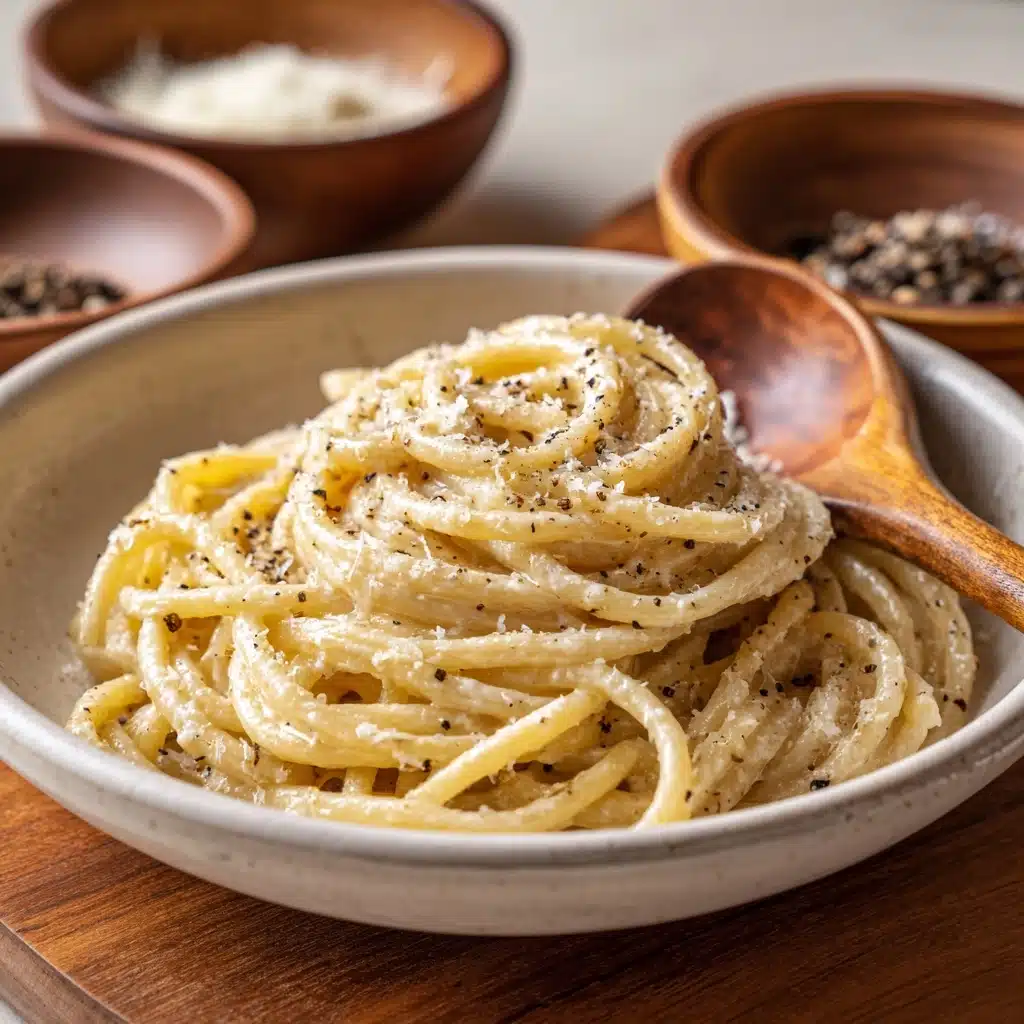
Ingredients You’ll Need
Classic Cacio e Pepe uses only a few hero ingredients, but each one has a starring role—don’t be tempted to cut corners here! From the creaminess of Pecorino Romano to the pepper’s warmth, every element contributes to the hallmark taste and texture. Here’s what you’ll need, plus why it matters:
- Spaghetti or Tonnarelli (12 ounces): Go for a sturdy pasta that can hold up to all that cheesy goodness—tonnarelli is traditional, but spaghetti works beautifully too.
- Freshly Grated Pecorino Romano Cheese (1 cup): This sharp, salty cheese is the backbone of the sauce; grate it yourself for the silkiest, most melt-in pasta sauce imaginable.
- Freshly Ground Black Pepper (2 teaspoons): Don’t skimp—freshly cracked makes all the difference, giving every bite depth and a gentle heat.
- Unsalted Butter (2 tablespoons, optional): Not classically Roman, but it adds a little extra creaminess for a truly luscious finish.
- Salt (for pasta water): Heavily salting your water seasons the pasta from within, making the whole dish come alive.
How to Make Cacio e Pepe
Step 1: Cook the Pasta
Start by bringing a large pot of generously salted water to a rolling boil. Add your spaghetti or tonnarelli, stirring now and then so nothing sticks together. Cook until perfectly al dente—just barely tender, with a bite. Before you drain, scoop out about 1 1/2 cups of that glorious, starchy pasta water. This liquid gold is your ticket to a creamy, emulsified sauce later on!
Step 2: Toast the Black Pepper
This step is where Cacio e Pepe gets its signature fragrance. Set a large skillet over medium heat and sprinkle in the freshly ground black pepper. Let it toast for about a minute, stirring often—soon you’ll smell the toastiness that sets the whole dish apart. This blooms the pepper, unlocking its warmth and nutty depth.
Step 3: Make the Sauce Base
Pour in 1/2 cup of your reserved pasta water and, if you’re using it, the butter. Stir or swirl the pan until the butter melts and the pepper is evenly distributed. Don’t be shy with the stirring—you want to see the pepper almost floating in the butter-water magic.
Step 4: Toss the Pasta
Transfer your drained, hot pasta straight into the peppery skillet. Using tongs, toss and swirl so every noodle gets plenty of flavor. This also jump-starts the emulsion (that is, encourages everything to come together into a saucy coating).
Step 5: Add Pecorino Romano and Create the Sauce
Now, take the skillet off the heat. Start showering in the freshly grated Pecorino Romano, tossing constantly with your tongs. Add a little reserved pasta water at a time—just enough to turn the cheese and pepper into a silky, smooth sauce that clings to the pasta without clumping. This is the magical Cacio e Pepe moment—keep the sauce moving and don’t rush!
Step 6: Serve Immediately
Dish up those glistening cheese-coated noodles right away. For a little extra drama (and flavor), sprinkle with even more Pecorino Romano and another twist of black pepper before serving. The key to the best Cacio e Pepe is eating it while it’s still glossy and hot!
How to Serve Cacio e Pepe
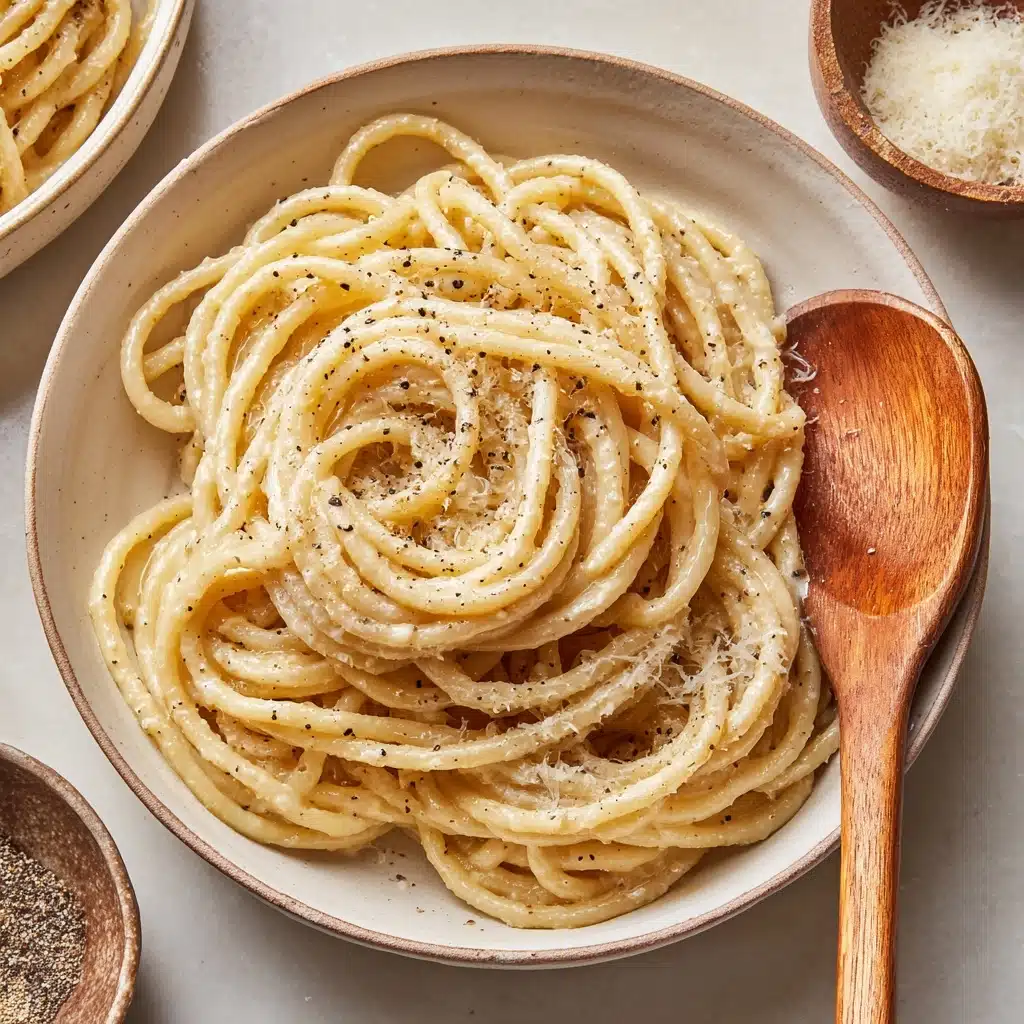
Garnishes
Keep it classic by showering your Cacio e Pepe with extra Pecorino Romano and a healthy crack of fresh black pepper. If you want a subtle pop of color, a little finely chopped parsley adds freshness without distracting from the main event.
Side Dishes
This pasta shines solo, but if you want to make it a meal, pair it with a simple crisp green salad dressed with lemon and olive oil, or some roasted seasonal veggies. A glass of dry white wine and a hunk of crusty bread don’t hurt, either!
Creative Ways to Present
Take your Cacio e Pepe up a notch by serving it in big, shallow bowls for dramatic swirls, or pile it high in a hollowed-out wheel of Pecorino Romano for true Italian restaurant flair. For parties, twirl portions into “nests” using a carving fork, place them on small plates, and finish with a final snowfall of cheese.
Make Ahead and Storage
Storing Leftovers
If you have leftover Cacio e Pepe, let it cool slightly and store it in an airtight container in the fridge for up to two days. The sauce may lose a little of its impeccable gloss, but the flavor holds!
Freezing
I don’t recommend freezing Cacio e Pepe, as the cheese sauce tends to separate once thawed, leaving you with less-than-pefectly-creamy results. This is a dish best enjoyed fresh!
Reheating
To revive leftover Cacio e Pepe, heat it gently in a nonstick skillet over low heat, adding a splash of hot water or milk while you toss to loosen the sauce. Avoid microwaving if you can, as it can make the cheese tough and sauce oily.
FAQs
Can I use Parmesan instead of Pecorino Romano?
While Parmesan can work in a pinch, it’s milder and less salty than Pecorino Romano. For the truest Cacio e Pepe flavor, stick with the sharp bite of Pecorino Romano.
Should I use pre-grated cheese?
Freshly grated is best! Pre-shredded cheese often contains additives that can make your sauce gritty or clumpy. Take the extra minute to grate your own and your sauce will thank you.
Is the butter optional?
Absolutely. Traditional Roman Cacio e Pepe skips the butter, but many home cooks add it for a creamier texture. It’s delicious either way—choose whichever suits your mood.
Why did my cheese sauce turn clumpy?
This usually happens if your cheese goes into a pan that’s too hot, or if you add it all at once. Remove the skillet from the heat before adding cheese and toss vigorously, adding water slowly for silky smoothness.
Can I make Cacio e Pepe gluten-free?
Yes, just use a good quality gluten-free spaghetti. Everything else about the recipe stays the same—rich, cheesy, peppery goodness for everyone!
Final Thoughts
There’s nothing quite like gathering friends or family for a big bowl of Cacio e Pepe—simple, soulful, and absolutely unforgettable. It’s a true example of how just a few ingredients, treated with care, can create pure magic on the plate. Give it a try, and I promise you’ll be dreaming about that silky cheese sauce and peppery bite long after the last noodle is gone!
Print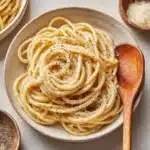
Cacio e Pepe Recipe
- Total Time: 20 minutes
- Yield: 4 servings
- Diet: Vegetarian
Description
Learn how to make a classic Roman pasta dish, Cacio e Pepe, with this easy and delicious recipe. This simple yet flavorful dish features spaghetti or tonnarelli tossed in a creamy Pecorino Romano cheese sauce with a generous amount of freshly ground black pepper.
Ingredients
Spaghetti or Tonnarelli:
12 ounces
Freshly Grated Pecorino Romano Cheese:
1 cup
Freshly Ground Black Pepper:
2 teaspoons
Unsalted Butter (optional):
2 tablespoons
Salt for Pasta Water:
as needed
Instructions
- Cook the Pasta: Boil salted water, cook pasta until al dente, and reserve 1 1/2 cups of pasta water.
- Toast Pepper: Toast black pepper in a skillet.
- Prepare Sauce: Add pasta water and butter to the skillet, then add cooked pasta. Toss well and gradually add Pecorino Romano.
- Serve: Toss until a creamy sauce forms, then serve topped with extra cheese and pepper.
Notes
- Use freshly grated Pecorino Romano for a smoother sauce.
- Toss quickly to prevent cheese from seizing.
- Prep Time: 5 minutes
- Cook Time: 15 minutes
- Category: Main Course
- Method: Stovetop
- Cuisine: Italian
Nutrition
- Serving Size: 1 bowl
- Calories: 520
- Sugar: 2g
- Sodium: 550mg
- Fat: 18g
- Saturated Fat: 11g
- Unsaturated Fat: 6g
- Trans Fat: 0g
- Carbohydrates: 66g
- Fiber: 3g
- Protein: 20g
- Cholesterol: 45mg
